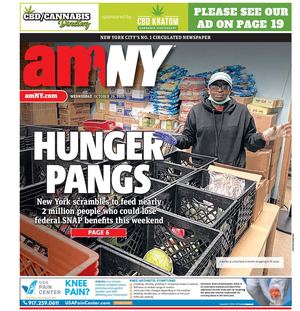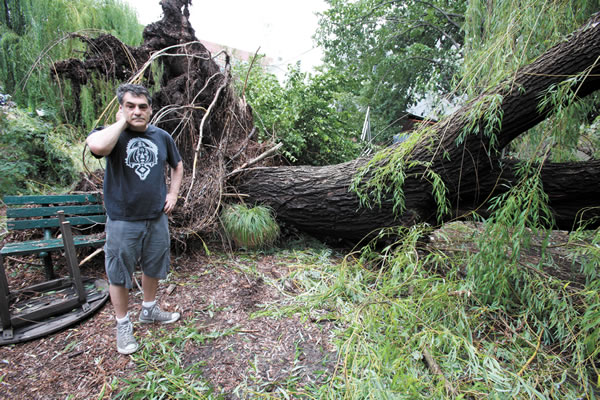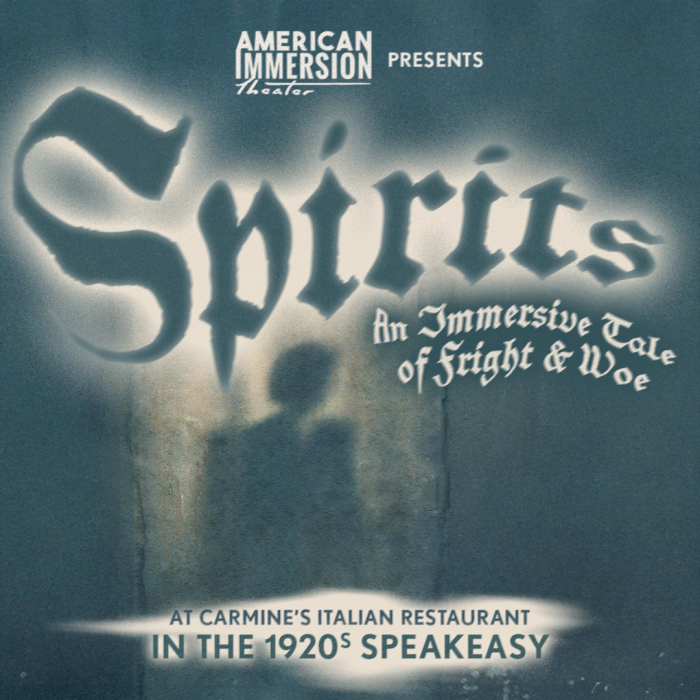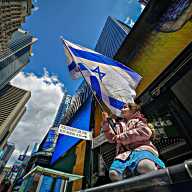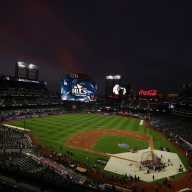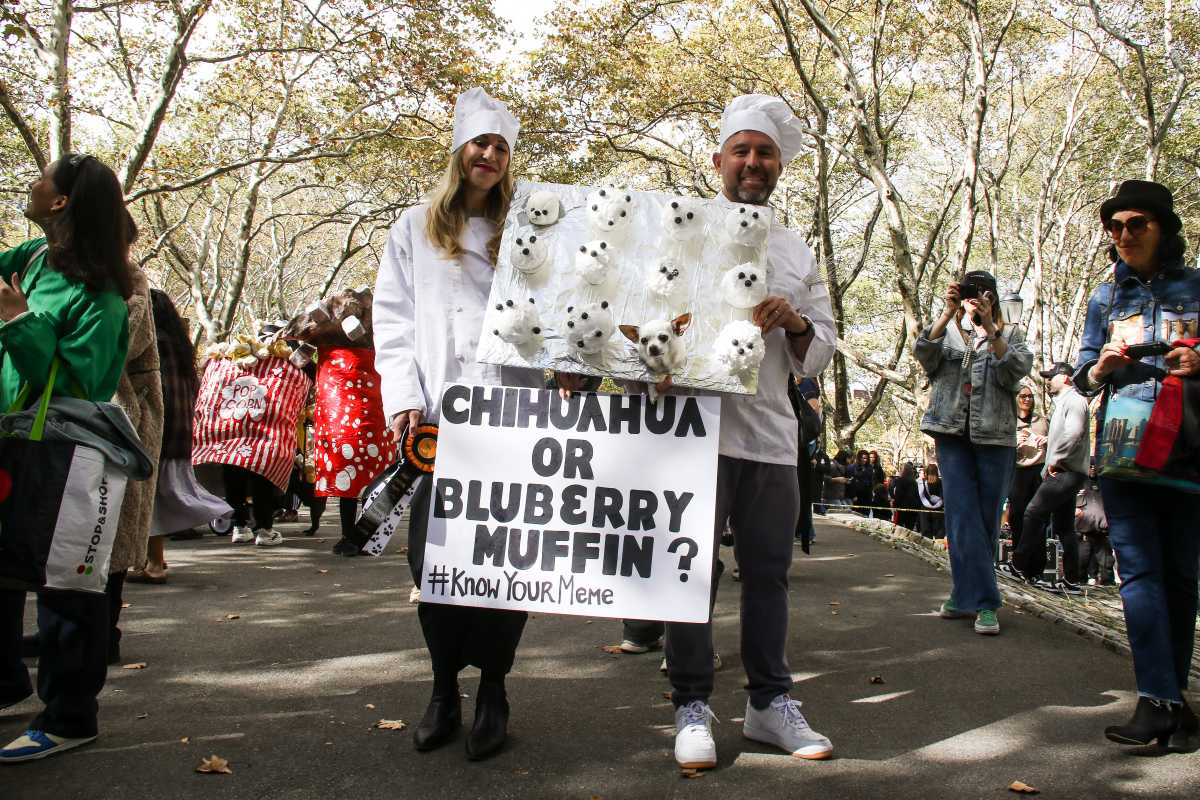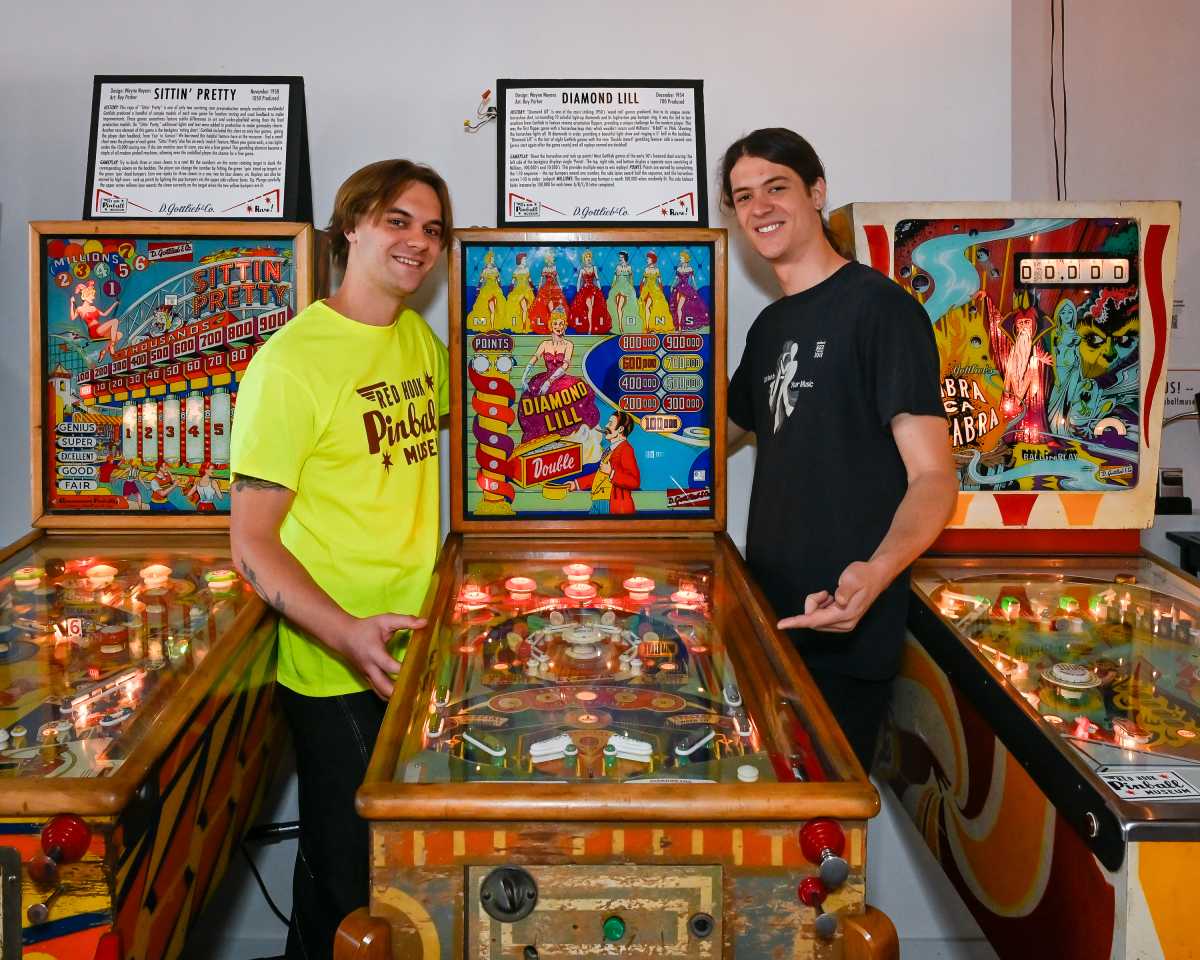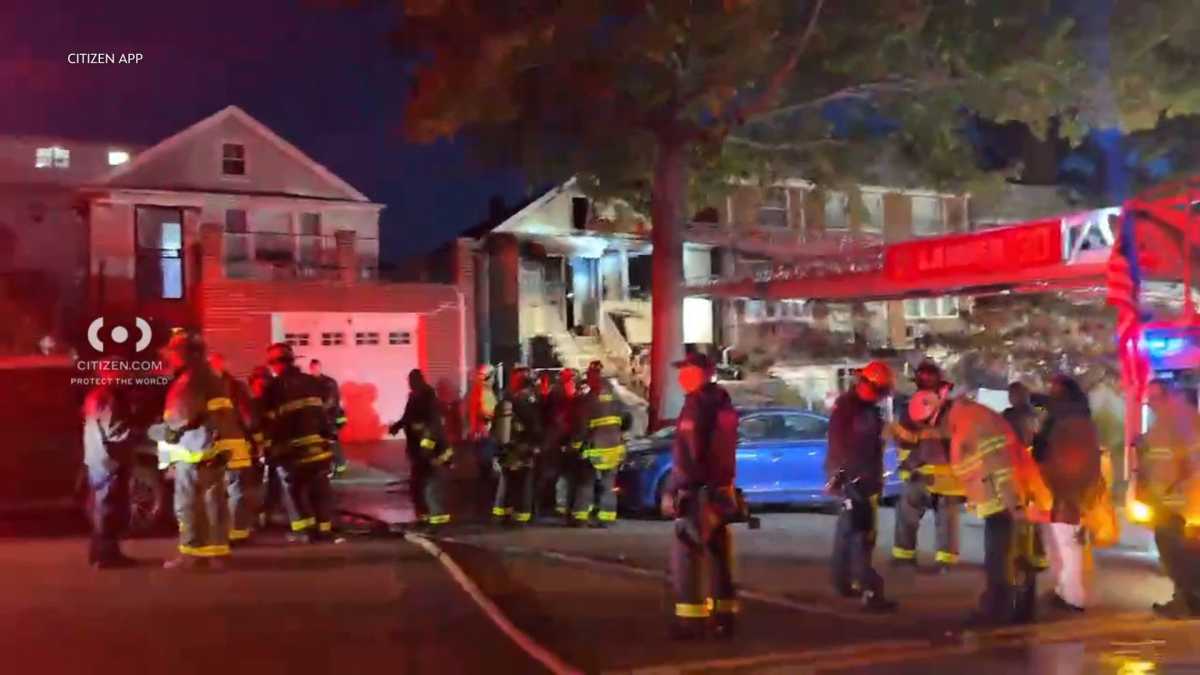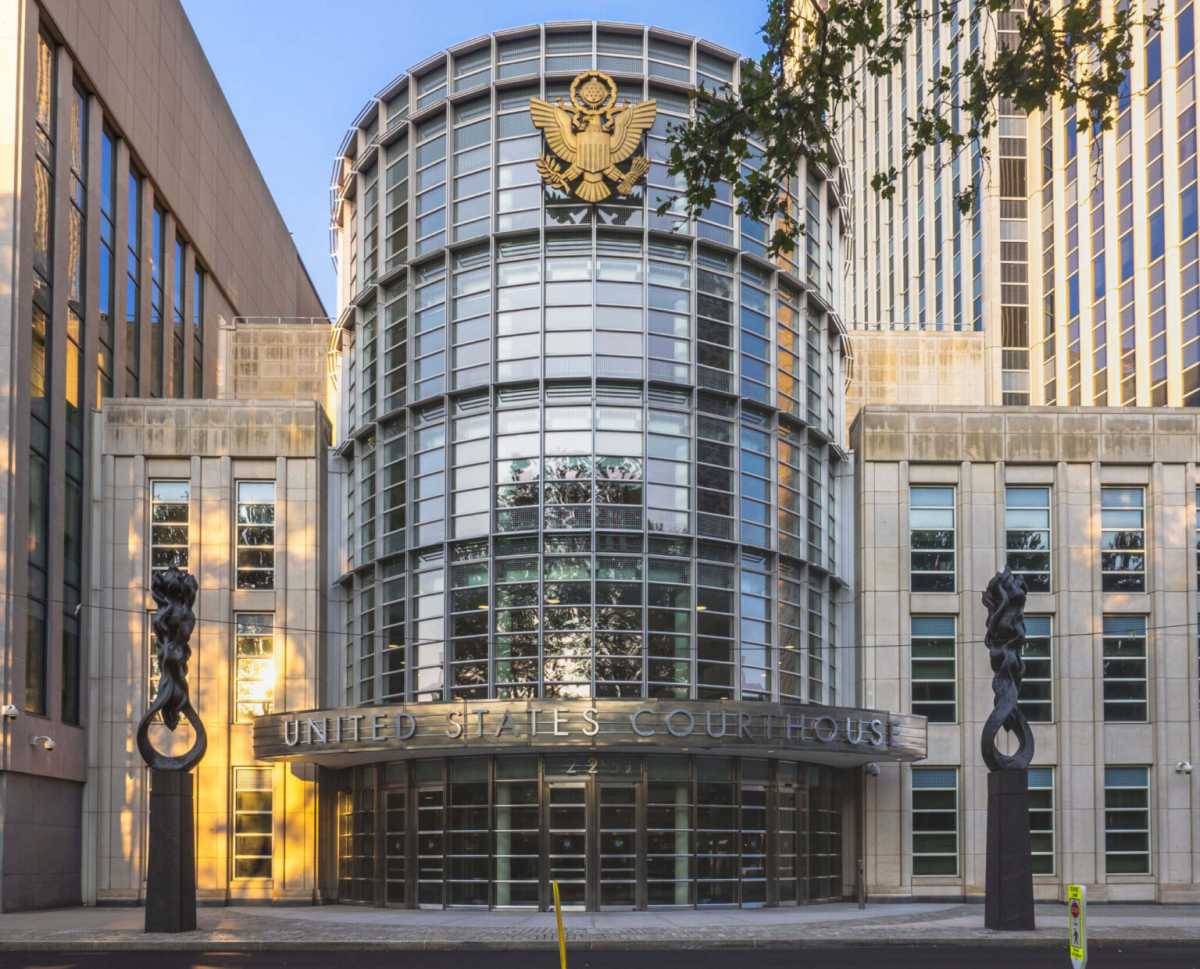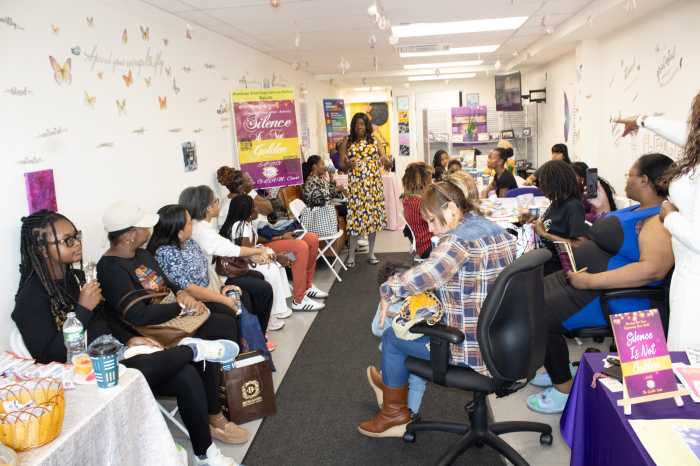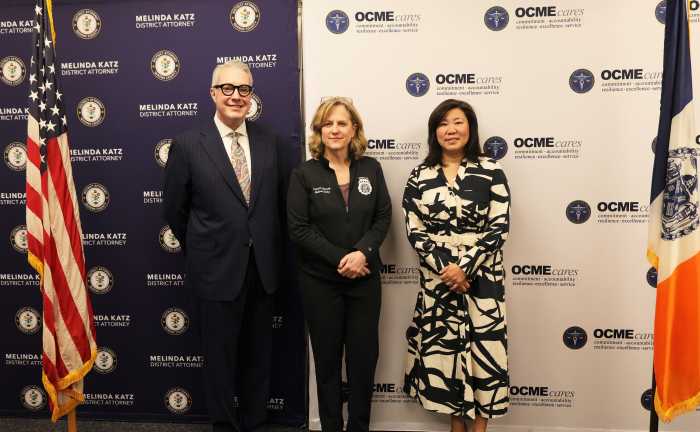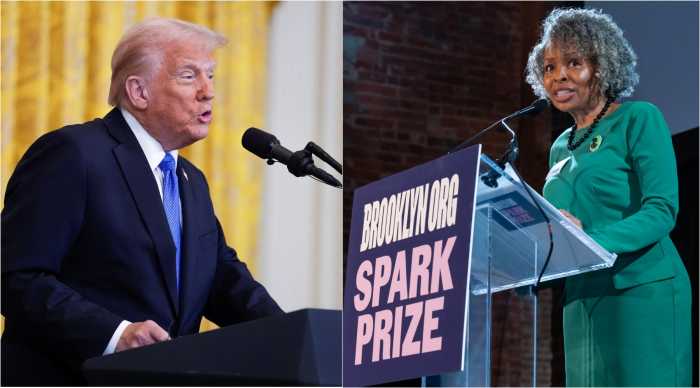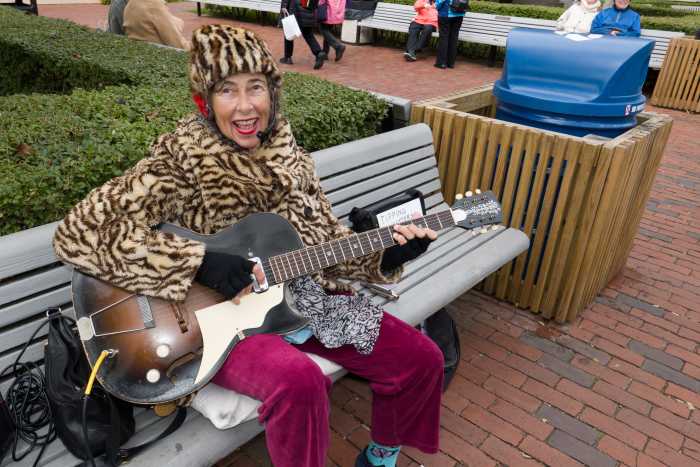By Lincoln Anderson
To evacuate or not to evacuate? That was the question in much of Downtown Manhattan last Saturday afternoon, as Irene — then still classified as a hurricane — was bearing down on New York.
Around 6 p.m., Fabian Dale, 24, was rolling down E. 10th St. at Avenue D in his wheelchair. He had long since missed the last bus out after the mayor had hours earlier shut down the transit system. But he still planned to evacuate — not for the mayor, but for his wife. She was up at the evacuation center at Baruch College on E. 24th St.
“I’m going to roll over there for love,” he declared as he flung his chair forward as a steady drizzle was starting. “I’m a trooper!”
Maritza Beauchamp, heading the other direction down E. 10th St., said that personally she wanted to evacuate, too, to a relative’s place on Avenue A, but all her friends in the Lillian Wald Houses were staying put, so she probably would also. Her friends were preparing for the storm — in their own fashion.
“We’re supposed to evacuate, but the people in my building aren’t evacuating — they’re cooking, ribs and everything!” she said, incredulously.
Andrew Nitze, walking down the street with his wife and child, said they weren’t leaving, either. They live in a small building and the worst that could happen would be their power would be knocked out for a while, he said.
The rain-soaked streets were mostly deserted, though police cars with lights flashing were cruising around keeping an eye on things.
Nitze said the officers weren’t really telling people to evacuate at that point, but just “keeping order.” He said they’d seen one broken window during their walk around the neighborhood, but that it just looked like vandalism, not a burglary.
However, a block north at the C-Town, the alarm was blaring.
“Burglary! Burglary! Burglary!” a recorded voice declared between the siren wails. “You have violated an area protected by a security system! Leave immediately!”
A police car eventually rolled by, but the officers didn’t get out to investigate.
Farther south, on Pitt St. at the Samuel Gompers Houses, a few apartment windows high up could be seen with masking-tape “X”’s on them. But otherwise all the other windows were unprotected.
Giving his dogs, Prada and Snoopy, a last pre-’cane walk, Gompers resident Luciano Lopez said he’d thought of taping his windows, but didn’t. Police had come around earlier knocking on doors and asking if people wanted to evacuate, but he told them he wouldn’t. The city usually overreacts to these kind of situations, he said. Actually, Gompers was just outside of the evacuation area, dubbed Zone A.
Soon-to-be evacuee Fabian Dale on E. 10th St., left, and evacuation center volunteer John Levin outside Seward Park High School.
500 at evacuation center
Seward Park High School, at Grand and Ludlow Sts., was the Lower East Side’s main evacuation center. Things seemed to be going smoothly there, thanks in part to the efforts of local volunteers who pitched in to help.
One volunteer, whose job was to register people as they came in, reported the shelter was filled to capacity with 500 people. As a result, he said, 100 more Irene evacuees were put up nearby at P.S. 131, about six blocks away.
Another volunteer, John Levin, who had been moving around boxes of supplies inside, had just completed his three-hour shift at 6 p.m. The people inside had just gotten their dinner — beef ravioli with corn and carrots — he reported. Describing the scene inside, he said, there were cots lining the hallways, and a gym had even been set aside for pets, with cats and dogs in crates. Apparently, the city learned a lesson from Hurricane Katrina, when some New Orleans residents were reluctant to evacuate without their pets, sometimes costing them their lives.
Levin is a financial adviser to municipal governments. Asked why he decided to help out, he said simply, “I live near this school, so I looked it up online. I saw they had put out a request for volunteers.”
Evacuees on evacuating
Stepping out to get some air in front of the shelter, Kevin Beckum, who lives at Eighth St. and the F.D.R. Drive, said it made sense for him and his family to evacuate. Their apartment is high up and facing right out onto the East River, so he expected they’d get the brunt of the storm; plus, he took out their air conditioner because he didn’t want it to get blown off and, consequently, it was just too humid at their place. And they didn’t want to be without electricity.
A store security officer, Beckum remarked of the shelter, “It’s quiet. It’s nice. People are hospitable. People were expecting a lot worse. There’s lots of games and arts and crafts inside for the kids. … This is like my alma matter,” he added with a smile. “I graduated here in 1984.”
Dan Scatena, 25, was having a smoke outside the school while trying to read a book of essays by David Foster Wallace despite the stiffening drizzle. An aspiring writer, he had evacuated from Avenue D. Asked if it would be part of his upcoming novel, he said, “Possibly — I’ve never experienced anything like this before.” The rain started coming down harder and he ducked back inside.
One of two huge old trees that the storm uprooted in Corlears Hook Park near Grand St.
Tough night for a minyan
With the streets cleared by the approaching storm, Rabbi Yisroel Stone of Chabad Lubavitch of the Lower East Side had a hard time rounding up a minyan for Shabbos — the required 10 Jewish men for the Saturday evening service that concludes the weekly day of rest and prayer. The service was held in the basement of the Blue Moon Hotel on Orchard St. Afterward, the rabbi, when asked if the earthquake and now the hurricane might possibly be construed as signs from above, said yes.
“One hundred percent,” he answered. “The earthquake and the hurricane in one week — the world is shaking. And we see it as a sign of the messiah — Moshiach — that the era of redemption and peace is coming.” Of course, no one should get hurt, he said. People of all faiths can hasten the messiah’s coming by doing acts of goodness and kindness, he noted.
As the rain continued, he protectively hustled the Torah scroll outside and into a car and drove off with some of his fellow Hasidim.
And then, before long, the heavy rains and wind came. …
But, in the end, it wasn’t to be the “mother of all New York City hurricanes,” after all. Irene weakened to a tropical storm and it was all over by the next morning, and the sun came out.
River overflows in E. 20s
No one was hurt Downtown, but a number of beloved large trees were toppled. The Hudson River Park Trust reported that parts of the waterfront park were submerged during the storm. East River Park apparently is high enough above sea level that it was a spared a dunking.In the E. 20s near Waterside Plaza and in Stuyvesant Cove Park, a ring of “sea mulch” was left along the esplanades, showing the storm-tossed river had, in fact, spilled over the seawall. This stuff was mainly composed of small, broken-up pieces of wood, white and yellow globules of rubbery material, colored plastic bottle caps, lighters, chapstick tubes, plastic spoons and straws and other flotsam and jetsam.
Along the East River and Hudson River esplanades, walkers and joggers emerged from indoors to peruse the storm’s aftermath. Many were couples, strolling hand in hand. It was still a bit gusty.
“With four kids, how long can you stay inside?” asked one woman from E. 34th St., wheeling a baby stroller, while two of her young sons argued over who would get to keep a small, broken wooden oar they found in the “sea mulch.”
In Stuyvesant Cove Park, a little black dog was sniffing the ring of strange-smelling, briny river debris, when he suddenly was overcome by a powerful urge.
“He just decided to roll in it!” his owner said, laughing.
L.E.S. tree carnage
The local area that appeared to have taken the worst hit was Corlears Hook Park and the east end of Grand St. on the Lower East Side. Two huge, old trees were uprooted in the park, with one crashing through a bench as if it were matchsticks.
A member of Community Board 3 CERT (Community Emergency Response Team) was checking out the scene in the park Sunday afternoon.
“This was an entry point for that wind gust,” he explained, looking around in awe at the damage. “So far, this is the worst area that I’ve seen all the way from Columbia and Delancey Sts. to here. It would have come in counterclockwise, like a boomerang, and just snapped everything,” he said, trying to visualize the impact. “But thank God, no one was here to be a witness to it.”
“That’s incredible,” added Sarah Keiser, who lives nearby, looking at the Corlears tree carnage. A willow in her own backyard was starting to lean perilously in the water-soaked soil, she noted anxiously.
Nearby, at the corner of the F.D.R. Drive and Grand St., several trees — many of them enormous and right near building entrances — were uprooted on the grounds of the East River Houses. One of them smashed the bus shelter on the corner to bits.
Weeping over willow
Alberto Fernandez, who had driven down from E. Ninth St. with his girlfriend, Carmen, to look at the damage on Grand St., noted sadly that La Plaza Cultural garden on E. Ninth St. at Avenue C had also lost a big weeping willow tree in the storm.
“It’s been there for so many years, it’s heartbreaking to see it come down,” he said.
Another stately tree succumbed near the Seward Park Library on East Broadway.
Tompkins Square Park — which saw the huge “scholar tree” fall across the park’s main Ninth St. pathway — was still closed after the storm. But Washington Square Park — where only one fairly large branch fell in the park’s northwest quadrant — was back open Sunday. Hudson River Park, which is new and has only small trees and shrubs, appeared to have weathered the storm pretty well, though one tree did go down on Tribeca’s Pier 25.
‘Goodbye, old friend’
Elizabeth Ruf Maldonado said when she heard Hurricane Irene was heading for the city, she sensed the Tompkins scholar tree was a goner.
“I went in right before they closed the park,” she said. “I saw that one leaning — I said, ‘Thank you for all the beauty and shade you gave.’ ”
The next morning, she hopped over the park’s fence to snap photos of the downed giant.
Anecdotal reports were that 80 percent to 90 percent of people in the evacuation area in the East Village and Lower East Side, in fact, did not leave their homes. Councilmember Rosie Mendez, who does live in Zone A, said she did evacuate.
“I went to Brooklyn to be with my Dad, who is in a safe zone,” she said. “Even if I didn’t have to evacuate, I would’ve wanted to be with my father.”
People had confusion over whether or not they were in an evacuation zone, and Mendez had to spend much of Friday dealing with constituents’ phone calls about that. She said the reason why some blocks were in Zone A while others weren’t was based on the underlying terrain.
On Sunday, kids played with the roots of a tree that fell outside the East River Houses.
After taking photos on top of it, two young women clambered off a toppled tree that had already been sawed up on Grand St. When the tree came down, it had crushed the bus shelter in the foreground.
Focused on seniors
On Saturday, Mendez was first at her district office, then went to her father’s, in Williamsburg. However, she came back to the district that night to make sure that people who needed to evacuate did so.
“I went looking for my seniors who were in wheelchairs and don’t have family in New York,” she said. These individuals were transported to two shelters on the West Side, one of which had doctors on hand and the other which at least was handicapped accessible.
As for the area that was supposed to be evacuated, she said, it included all of the Riis and Wald Houses, half of the Baruch Houses, Campos Plaza, Village East and Haven Plaza, among others. However, she admitted, “I don’t think there was a high evacuation rate. On Saturday, I did see some people with their bags walking west, but it was not a mass exodus.”
Mendez said some people told her they had been through hurricanes in Puerto Rico before and weren’t worried. Others said they had nowhere else to stay and didn’t want to go to a shelter.
“My concern was for the elderly and the disabled,” the councilmember said, “because you can only tell people so much, and they’re going to do what they’re going to do.”
Housing Authority elevators in Zone A were shut down Saturday at 5 p.m. as a precaution. Flooding potentially could have knocked out electrical power to the elevators, trapping people inside.
Skeptical in Soho
Sean Sweeney, director of the Soho Alliance, was skeptical about the city’s response to Irene. He said Saturday night he walked down to Battery Park City, which was really being pushed by the city as the main evacuation area.
“I wanted to see the storm,” he said. “There were only about 10 apartment lights on down there.”
Like more than a few others, Sweeney said the mayor’s response to Irene was an effort to make up for his perceived laxness during December’s big snowstorm.
“The mayor wants to preserve his legacy and not be mocked in the editorials again,” Sweeney said.
Hudson Square activist Phil Mouquinho was of a like mind. Zone A extended along the Lower West Side’s edge. Neighbors called Mouquinho — who grew up in the neighborhood — asking his opinion on whether they should flee the area. An experienced boater, he studied the storm data, considered the paths that past storms have tracked and reached his own conclusion.
“My advice was you don’t have to evacuate,” he said. “Most people listened to me — they stayed put.”
Nonetheless, Mouquinho definitely made sure the pumps were working in the basement of his Greenwich St. restaurant, P.J. Charlton, and that all the furniture had been removed from the roof.
“I think the mayor was definitely going to err on the side of safety,” he said, adding, “I think it was a little over the top.”
Julie Dubow, a Wesbeth resident, reported there was flooding at Horatio and West Sts., with some apartments and basements inundated.
‘Mayor made right move’
Asked if she felt the mayor’s partial evacuation call was correct, Mendez said, “It’s better to be safe than sorry.”
Above all, the experience once again reaffirmed Mendez’s faith in New Yorkers during a time of crisis.
“I’ve seen it and I’ve lived through it after 9/11 and after the blackout,” she said. “And it’s wonderful to behold — the generosity of New Yorkers and their compassion.”
